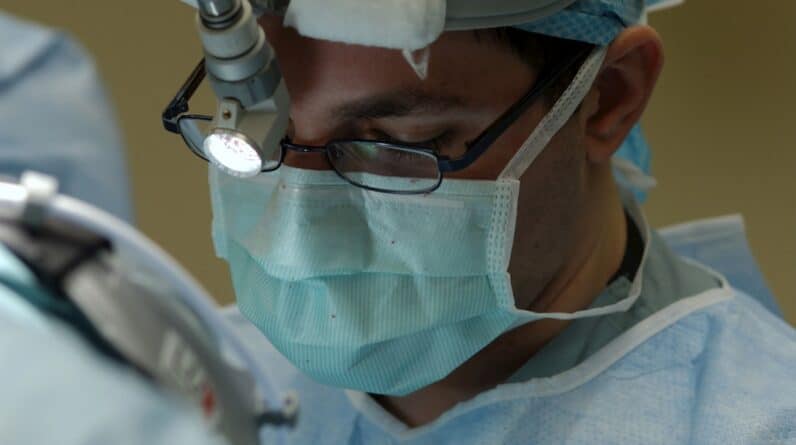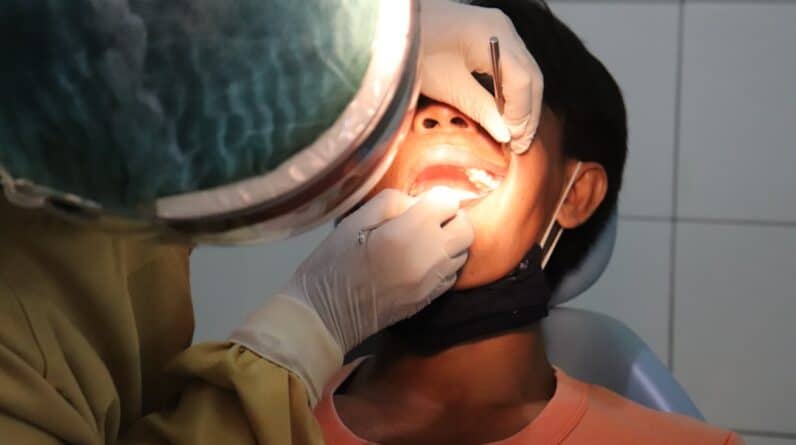Astigmatism is a common refractive error that affects how light is focused on the retina, leading to blurred or distorted vision. If you have astigmatism, your cornea or lens may have an irregular shape, which prevents light from focusing evenly on the retina. This condition can occur in conjunction with nearsightedness or farsightedness, complicating your vision further.
You might notice that straight lines appear wavy or that your vision fluctuates depending on the lighting conditions. Understanding astigmatism is crucial for recognizing its impact on your daily life and exploring potential treatment options. The symptoms of astigmatism can vary from person to person.
You may experience eye strain, headaches, or difficulty seeing at night. These symptoms can be particularly bothersome if you spend long hours in front of a computer screen or engage in activities that require sharp vision. If you suspect you have astigmatism, it’s essential to consult an eye care professional who can provide a comprehensive eye exam and determine the best course of action for your specific needs.
Key Takeaways
- Astigmatism is a common eye condition that causes blurred vision due to an irregularly shaped cornea or lens.
- Laser eye surgery is a procedure that uses a laser to reshape the cornea and correct vision problems such as astigmatism.
- The benefits of laser eye surgery for astigmatism include improved vision, reduced dependence on glasses or contact lenses, and long-term cost savings.
- The procedure of laser eye surgery involves creating a thin flap in the cornea, reshaping the underlying tissue with a laser, and repositioning the flap.
- Finding the right surgeon for laser eye surgery is crucial, and factors to consider include experience, qualifications, and patient satisfaction.
What is Laser Eye Surgery?
Laser eye surgery is a popular and effective procedure designed to correct various refractive errors, including astigmatism. This innovative technique utilizes advanced laser technology to reshape the cornea, allowing light to focus more accurately on the retina. If you are considering this option, it’s important to understand how the procedure works and what it entails.
Laser eye surgery has gained popularity due to its minimally invasive nature and quick recovery times, making it an appealing choice for many individuals seeking clearer vision. There are several types of laser eye surgery, including LASIK, PRK, and LASEK. Each method has its unique approach to reshaping the cornea, but they all share the common goal of improving visual acuity.
As you explore your options, you may find that one type of surgery aligns better with your lifestyle and vision correction needs than others. Understanding the differences between these procedures will empower you to make an informed decision about your eye care.
Benefits of Laser Eye Surgery for Astigmatism

One of the most significant benefits of laser eye surgery for astigmatism is the potential for improved vision without the need for glasses or contact lenses. Many individuals who undergo this procedure report a dramatic enhancement in their visual clarity, allowing them to engage in daily activities with greater ease and confidence. Imagine waking up in the morning and seeing clearly without fumbling for your glasses or struggling with contact lenses.
This newfound freedom can significantly enhance your quality of life. In addition to improved vision, laser eye surgery often leads to a reduction in eye strain and discomfort associated with astigmatism. You may find that activities such as reading, driving, or using digital devices become more enjoyable and less taxing on your eyes.
Furthermore, the quick recovery time associated with laser procedures means you can return to your normal routine sooner than you might expect. Many patients experience minimal downtime and can resume their daily activities within a day or two after surgery.
The Procedure of Laser Eye Surgery
The procedure for laser eye surgery typically begins with a thorough pre-operative assessment to determine your candidacy for the treatment. During this evaluation, your eye surgeon will measure your corneal thickness, assess your overall eye health, and discuss your medical history. If you are deemed a suitable candidate, you will be given specific instructions to prepare for the surgery day.
On the day of the procedure, you will arrive at the surgical center where you will be made comfortable and given numbing eye drops to minimize any discomfort. Once you are ready, the surgeon will use a specialized laser to reshape your cornea. In LASIK surgery, for example, a thin flap is created on the surface of the cornea before the underlying tissue is reshaped with a laser.
This flap is then repositioned, allowing for rapid healing. The entire process usually takes less than 30 minutes per eye, and many patients report feeling little to no pain during the procedure. Afterward, you will be monitored briefly before being allowed to go home, often with a follow-up appointment scheduled within a few days.
Finding the Right Surgeon for Laser Eye Surgery
Choosing the right surgeon for your laser eye surgery is a critical step in ensuring a successful outcome. You should seek out an experienced ophthalmologist who specializes in refractive surgery and has a proven track record of successful procedures. Start by researching potential surgeons in your area and reading reviews from previous patients.
Personal recommendations from friends or family members who have undergone similar procedures can also be invaluable in guiding your decision. During consultations with potential surgeons, don’t hesitate to ask questions about their experience, surgical techniques, and success rates. A reputable surgeon will be transparent about their qualifications and will take the time to address any concerns you may have.
Additionally, consider the technology used in their practice; advanced laser systems can enhance precision and improve outcomes. Ultimately, finding a surgeon who makes you feel comfortable and confident in their abilities is essential for achieving the best possible results.
Preparing for Laser Eye Surgery

Preparation for laser eye surgery involves several important steps to ensure that you are ready for the procedure and that it goes smoothly. Your surgeon will provide specific instructions tailored to your needs, but there are general guidelines that most patients should follow. For instance, you may be advised to avoid wearing contact lenses for a period leading up to the surgery, as this can affect the shape of your cornea and impact surgical outcomes.
On the day of your surgery, it’s advisable to arrange for someone to drive you home afterward since your vision may be temporarily blurry immediately following the procedure. You should also plan to take it easy for at least a day or two post-surgery; this means avoiding strenuous activities and giving your eyes time to heal properly. Preparing mentally for the experience can also be beneficial; understanding what to expect during and after the procedure can help alleviate any anxiety you may feel.
Recovery Process After Laser Eye Surgery
The recovery process after laser eye surgery is typically quick and straightforward for most patients. Immediately following the procedure, you may experience some mild discomfort or a sensation similar to having something in your eye; however, this usually subsides within a few hours. Your surgeon will provide you with post-operative instructions that may include using prescribed eye drops to prevent infection and promote healing.
In the days following your surgery, it’s essential to follow your surgeon’s guidelines closely. You may be advised to avoid rubbing your eyes or exposing them to bright lights until they have fully healed. Many patients notice significant improvements in their vision within 24 hours; however, complete stabilization of vision can take several weeks.
Regular follow-up appointments will allow your surgeon to monitor your progress and address any concerns that may arise during your recovery.
Potential Risks and Complications
While laser eye surgery is generally considered safe and effective, like any medical procedure, it carries some risks and potential complications. You should be aware of these before proceeding with surgery. Common side effects include dry eyes, glare, halos around lights at night, and fluctuating vision during the initial healing period.
Most of these issues resolve on their own as your eyes heal; however, it’s essential to discuss any persistent problems with your surgeon. In rare cases, more serious complications can occur, such as infection or undercorrection/overcorrection of vision. It’s crucial to have realistic expectations about the outcomes of laser eye surgery and understand that while many patients achieve excellent results, individual experiences can vary.
Your surgeon will discuss these risks with you during your consultation and help you weigh them against the potential benefits of the procedure.
Cost of Laser Eye Surgery for Astigmatism
The cost of laser eye surgery for astigmatism can vary widely depending on several factors, including the type of procedure chosen, the surgeon’s experience, and geographic location. On average, patients can expect to pay anywhere from $2,000 to $3,000 per eye for LASIK or similar procedures. While this may seem like a significant investment upfront, many individuals find that the long-term savings on glasses and contact lenses make it worthwhile.
Insurance coverage for laser eye surgery is often limited; however, some plans may offer partial coverage or flexible payment options through financing plans offered by surgical centers. It’s essential to inquire about costs during your initial consultations so that you can budget accordingly and explore any available financial assistance options.
Success Rates of Laser Eye Surgery for Astigmatism
The success rates of laser eye surgery for astigmatism are generally high, with many studies indicating that over 90% of patients achieve 20/25 vision or better after undergoing LASIK or similar procedures. These impressive statistics reflect advancements in technology and surgical techniques that have improved outcomes over time. If you are considering this option, knowing that many individuals have successfully corrected their astigmatism through laser surgery can provide reassurance.
It’s important to remember that individual results may vary based on factors such as age, overall eye health, and adherence to post-operative care instructions. Your surgeon will provide personalized information regarding what you can expect based on your specific circumstances during your consultation.
Frequently Asked Questions about Laser Eye Surgery for Astigmatism
As you consider laser eye surgery for astigmatism, you likely have many questions about the procedure and what it entails. One common question is whether laser eye surgery is painful; most patients report minimal discomfort during the procedure due to numbing drops used beforehand. Another frequent inquiry involves how long recovery takes; while many individuals notice improvements within a day or two, full stabilization may take several weeks.
You might also wonder about age restrictions; while there is no strict age limit for laser eye surgery, candidates should be at least 18 years old and have stable vision for at least one year prior to surgery. Additionally, some patients ask about long-term effects; studies indicate that laser eye surgery has lasting results for most individuals but regular check-ups with an eye care professional are recommended to monitor overall eye health over time. In conclusion, understanding astigmatism and exploring treatment options like laser eye surgery can significantly enhance your quality of life by improving visual clarity and reducing dependence on corrective lenses.
By educating yourself about the procedure, its benefits, risks, costs, and recovery process, you empower yourself to make informed decisions regarding your eye care journey.
FAQs
What is laser eye surgery for astigmatism?
Laser eye surgery for astigmatism is a procedure that uses a laser to reshape the cornea, correcting the irregular curvature that causes astigmatism. This can reduce or eliminate the need for glasses or contact lenses.
How does laser eye surgery for astigmatism work?
During the procedure, a laser is used to remove a small amount of tissue from the cornea, reshaping it to correct the irregular curvature that causes astigmatism. This allows light to focus properly on the retina, improving vision.
Is laser eye surgery for astigmatism safe?
Laser eye surgery for astigmatism is considered to be a safe and effective procedure for the majority of patients. However, as with any surgical procedure, there are potential risks and complications that should be discussed with a qualified eye surgeon.
What are the benefits of laser eye surgery for astigmatism?
The main benefit of laser eye surgery for astigmatism is the potential for improved vision without the need for glasses or contact lenses. Many patients also experience greater convenience and freedom in their daily activities.
Am I a candidate for laser eye surgery for astigmatism?
Candidates for laser eye surgery for astigmatism should be in good overall health, have a stable prescription for at least a year, and have realistic expectations about the outcome of the procedure. A comprehensive eye exam and consultation with a qualified eye surgeon can determine if you are a suitable candidate.






